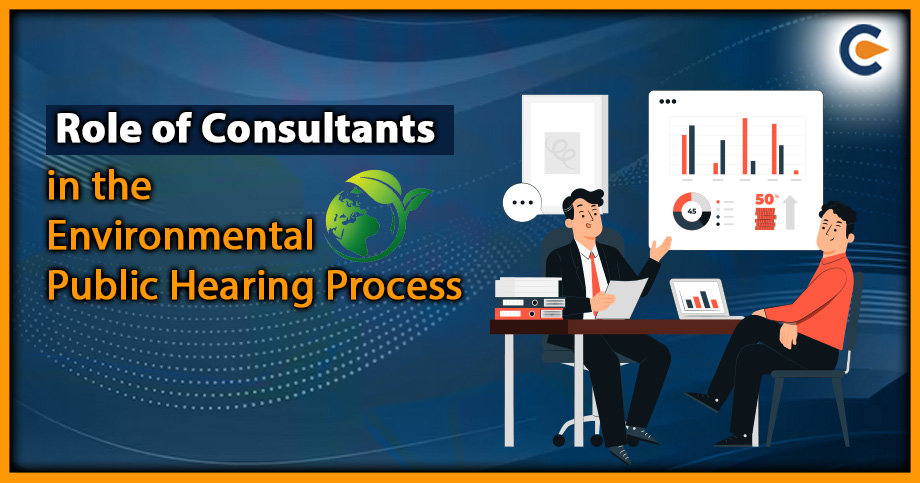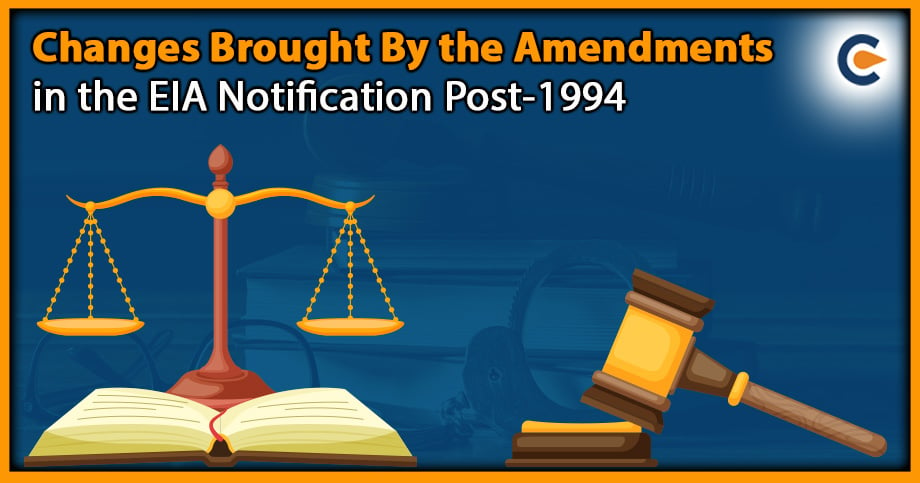The public hearing is crucial to a successful Environmental Impact Assessment (EIA) procedure. An Environmental public hearing serves as a means for individuals who are directly affected to voice their concerns and promotes transparency in the environmental clearance process. The critical difference between public consultation and participation is that the former is a passive process of requesting written input from the public on their concerns. In contrast, the latter involves more active public engagement, including dialogue, examination, consideration, and response. In other words, public consultation is generally conducted in a “listening mode,” while public participation goes a step further and considers active participation and engagement.
Process of Environmental Public Hearing
Public involvement was introduced in India in 1997 in the form of public The process of Environmental Public Hearing is as follows:
- The process begins with the State Pollution Control Board (SPCB) issuing a notice in at least two newspapers circulating in the region, one in the local language.
- The notice includes the date, time, and location of the public hearing, and the public has 30 days to provide written suggestions, views, comments, and objections to the SPCB.
- The public has access to the executive summary of the project’s salient features in both the local language and English and the EIA report, which can be obtained from various departments.
- The SPCB forms a public hearing panel that includes representatives from SPCB, the district collector or their nominee, state government representatives dealing with the project, up to three representatives of the local Panchayat/municipality, and up to three senior citizens nominated by the district collector.
- After the public hearing, the project developer will receive a No Objection Certificate (NOC) from the SPCB and submit an application to the Secretary of the Ministry of Environment and Forests for environmental clearance.
Role of Consultants in the Environmental Public Hearing Process
Project proponents hire consultants to prepare Environmental Impact Assessment (EIA) reports. The role of the consultants is as follows:
- Consultants are responsible for identifying and assessing potential environmental impacts and proposing measures to mitigate those impacts.
- Consultants assist in preparing the public hearing notice and executive summary of the EIA report, which are to be made available to the public.
- During the public hearing, consultants are present to provide information and answer questions related to the EIA report and potential environmental impacts.
- Consultants also participate in discussions and provide additional information as needed during the public hearing.
- Consultants are responsible for compiling and addressing any concerns or objections raised during the public hearing and making necessary revisions to the EIA report.
- Consultants assist in preparing the final EIA report, which incorporates any changes made due to the public hearing process.
Projects Exempted from Environmental Public Hearing
The projects exempted from the public consultation process are as follows:
- Small-scale industrial undertakings located in notified or designated industrial areas/industrial estates, areas marked for industries under the jurisdiction of industrial development authorities, and mining projects (major minerals) with lease areas up to 25 hectares.
- The widening and strengthening of highways, units located in export processing zones and special economic zones, and modernization of existing irrigation projects are also exempted from public hearings.
Note – The Ministry of Environment and Forests (MoEF) remains the nodal agency for granting environmental clearance for these projects, regardless of their exemption from public hearings.
Regulations governing Environmental Public Hearing
- The Environment (Protection) Act, 1986: This Act provides the legal framework for protecting and improving the environment. It empowers the Central Government to take enact legislations to protect and improve the environment. The E(P) Act provides for establishing various regulatory bodies, such as the State Pollution Control Boards, to implement the provisions of the Act.
- The EIA Notification, 2006: This notification outlines the procedure and requirements for conducting EIAs in India. It specifies the projects and activities that require an EIA and the procedure for conducting such hearings.
- The Water (Prevention and Control of Pollution) Act, 1974: This Act provides for the prevention and control of water pollution and empowers the Central and State Pollution Control Boards to take measures to control and prevent water pollution.
- The Air (Prevention and Control of Pollution) Act, of 1981 provides for the prevention and control of air pollution. It empowers the Central and State Pollution Control Boards to take measures to control and prevent air pollution.
- The National Green Tribunal Act, 2010[1]: This Act establishes the National Green Tribunal (NGT) to handle environmental disputes and provide effective and speedy disposal of environmental protection and conservation cases.
Conclusion
Environmental Public Hearing is a crucial process for seeking public opinion, comments, and objections on any proposed project or activity that is likely to impact the environment significantly. EPH is governed by the Environmental Impact Assessment Notification, 2006, which provides a comprehensive legal framework for conducting EPHs in India. Public Hearings are essential in ensuring transparency, accountability, and effective public participation in the decision-making process related to projects or activities with potential environmental impacts. They allow stakeholders, including local communities and NGOs, to voice their opinions, express their concerns, and offer suggestions to improve the project’s environmental impact. An environmental public hearing ensures that the proposed project or activity is carefully evaluated for its environmental impact, and the opinions, comments, and objections raised during the EPH are considered by the appraisal committee while preparing its report. This helps to ensure that the decision-making process related to projects or activities with potential environmental impacts is fair, transparent, and inclusive.
Read Our Article: How To Conduct Public Hearing During EIA?











